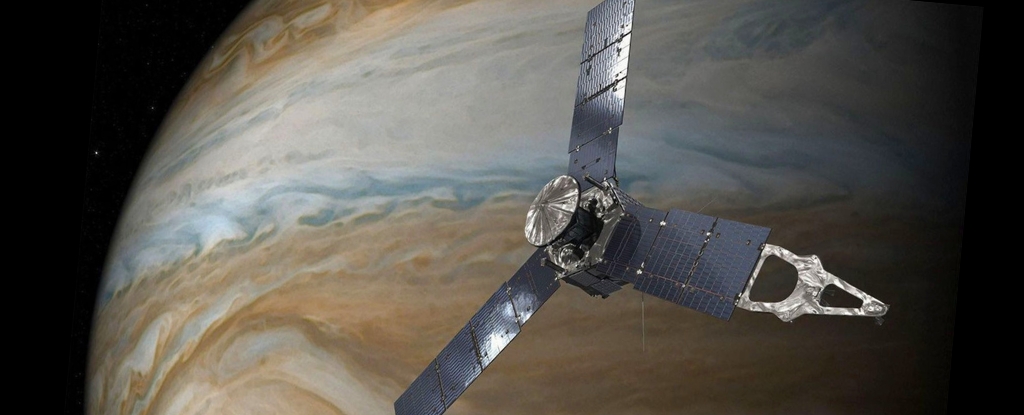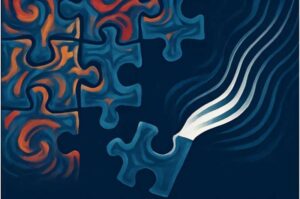
Astronomers at the Pan-STARRS Observatory in Hawaii recently confirmed the detection of a third interstellar object, designated 3I/ATLAS, which is expected to approach Jupiter on March 16, 2026. This discovery follows the historic observations of ‘Oumuamua in 2017 and the interstellar comet 2I/Borisov in 2019. The arrival of 3I/ATLAS has sparked significant scientific interest, leading to proposals for missions that could closely examine these fascinating celestial visitors.
One notable proposal comes from a research team led by Prof. Abraham Loeb of Harvard University. In their recent paper, they explore a unique opportunity for NASA’s Juno probe, which has been operational since 2016, to intercept 3I/ATLAS as it nears Jupiter. Their analysis suggests that with a specific maneuver, Juno could provide humanity with unprecedented insights into the nature of this interstellar comet.
Potential Intercept of 3I/ATLAS
According to the study, Juno could adjust its trajectory to meet 3I/ATLAS as it passes within approximately 53.6 million kilometers (about 33.25 million miles) of Jupiter. The research indicates that a thrust application on September 14, 2025, could realign Juno’s orbit, allowing it to rendezvous with the comet at its closest approach. This mission would not only extend Juno’s operational lifespan beyond its planned conclusion date of March 14, 2026, but also enable the analysis of an interstellar object without the need for a dedicated new spacecraft.
The team, which includes scientists Adam Hibberd and Adam Crowl from the Initiative for Interstellar Studies, utilized advanced trajectory analysis software to calculate the optimal flight path for Juno. Hibberd noted the challenges of launching a mission to intercept 3I/ATLAS, given the limited warning of its arrival. As he explained, “It is quite clear that a mission launched from Earth to 3I is completely infeasible, given how little warning we had of its arrival in the Solar System.”
Scientific Implications and Technological Considerations
The analysis conducted by Loeb, Hibberd, and Crowl emphasizes the importance of studying interstellar objects. Past missions have successfully gathered samples from Near-Earth Asteroids (NEAs), providing vital information about the early Solar System. In contrast, ISOs like 3I/ATLAS offer a glimpse into the conditions of distant star systems and the processes that govern their formation.
Loeb’s earlier work on ‘Oumuamua raised the possibility that interstellar objects could be of artificial origin. His current research builds on this hypothesis, suggesting that 3I/ATLAS might also represent advanced technology. He stated, “The consequences, should the hypothesis turn out to be correct, could potentially be dire for humanity, and would possibly require defensive measures to be undertaken.”
Recent observations from the Hubble Space Telescope, however, suggest that 3I/ATLAS may not be what some speculate. The brightness distribution around the comet indicates that its nucleus might have a radius of less than 2.8 kilometers (approximately 1.75 miles). This finding complicates the narrative around the object’s nature, but the true essence of 3I/ATLAS will be unveiled as it approaches the Sun, heating up and releasing gases through sublimation.
As the scientific community eagerly anticipates the close encounter, the potential for Juno to collect data from 3I/ATLAS represents a significant milestone in space exploration. The suite of instruments aboard Juno, including its near-infrared spectrometer and visible light camera, are well-equipped to analyze the comet’s composition. The results could provide crucial data about the object’s origin and the environmental conditions in its home system.
Looking ahead, the study of interstellar objects may reveal more than just the history of our Solar System; it could redefine our understanding of the cosmos and our place within it. The Juno probe’s potential intercept of 3I/ATLAS underscores the innovative spirit of modern astronomy and the ongoing quest for knowledge beyond our planet. As Loeb and his colleagues continue to explore these possibilities, the scientific community remains poised for what discoveries lie ahead.






